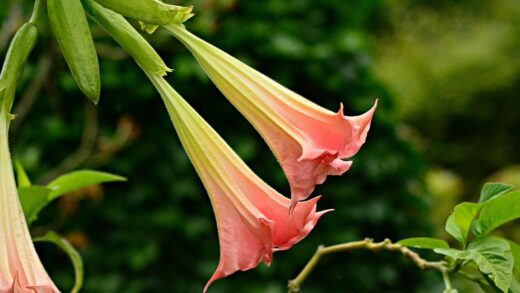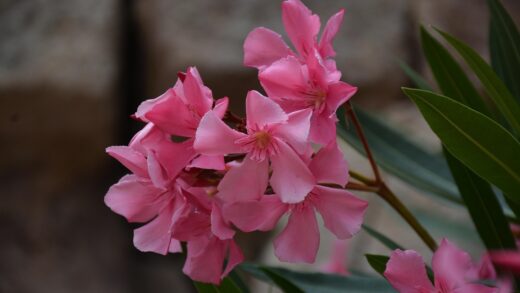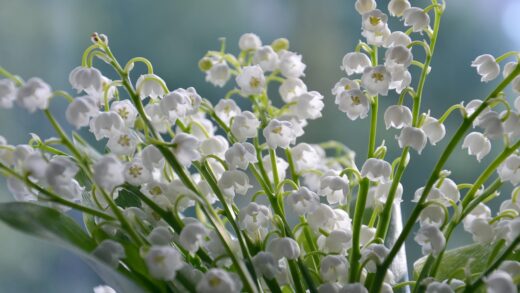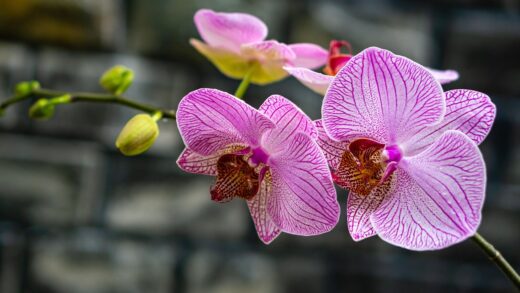Providing the Balkan squill with the appropriate nutrients is a key component of its long-term care, ensuring not only a vibrant floral display each spring but also the continued health and multiplication of the bulbs. While these plants are not considered heavy feeders, a thoughtful approach to fertilization can make a significant difference in their performance. Understanding their nutrient needs is about creating a fertile, balanced soil environment rather than applying frequent, high-strength chemical feeds. The focus should be on building a rich, humus-based soil that provides a slow and steady release of nutrients, closely mimicking the conditions of their native meadow habitats.
The primary goal of any feeding regimen for the Balkan squill is to support the bulb’s natural life cycle. The most critical time for nutrient uptake is in the spring, during the period of active growth when the plant is producing its leaves and flowers. The nutrients absorbed at this time fuel the current season’s display. Equally important is the post-flowering period, when the foliage is working to replenish the bulb’s energy stores for the following year. A well-nourished bulb will not only produce a better display but will also be more resilient to pests and diseases and more likely to produce offsets.
Organic matter is the cornerstone of a successful nutrient management plan for these bulbs. Materials such as well-rotted compost, leaf mold, and aged manure provide a complex range of macro- and micronutrients in a slow-release form that is ideal for bulbs. Incorporating organic matter into the soil before planting and applying it as an annual top-dressing in the autumn creates a sustainable and fertile growing medium. This approach improves soil structure and drainage while simultaneously providing the gentle, continuous supply of nutrients that the Balkan squill prefers.
While organic methods are generally superior, there can be a place for targeted application of mineral fertilizers, particularly for plants grown in containers or in nutrient-poor soils. When using these fertilizers, it is crucial to choose a formulation that is balanced and appropriate for bulbs. A fertilizer that is high in potassium and phosphate but lower in nitrogen is ideal, as this encourages strong bulb and root development and prolific flowering, rather than excessive, soft leafy growth. The timing and application rate of any fertilizer are critical to avoid damaging the plants and to ensure the nutrients are available when the plant needs them most.
The role of soil fertility
The inherent fertility of the soil is the single most important factor in meeting the nutritional needs of the Balkan squill. These bulbs thrive in a soil that is rich in humus and organic content, which acts as a natural, slow-release fertilizer. Before planting, it is highly beneficial to enrich the planting area with a generous amount of well-rotted organic matter. Materials like garden compost, leaf mold, or thoroughly composted manure should be dug into the top 15-20 centimeters of soil. This not only provides an initial nutrient boost but also significantly improves the soil’s structure, aeration, and water-retention capabilities.
More articles on this topic
A fertile soil provides a balanced diet for the bulbs, containing not just the primary macronutrients (nitrogen, phosphorus, and potassium), but also a wide array of essential micronutrients and trace elements. This complex nutrition is difficult to replicate with synthetic fertilizers alone. Furthermore, a soil rich in organic matter supports a healthy population of beneficial microorganisms, such as mycorrhizal fungi. These fungi form a symbiotic relationship with the plant’s roots, greatly extending their reach and improving their ability to absorb water and nutrients from the surrounding soil.
The pH of the soil also plays a critical role in nutrient availability. The Balkan squill prefers a soil that is neutral to slightly alkaline. In a soil that is too acidic or too alkaline, certain essential nutrients can become chemically ‘locked up’ and unavailable for the plant to absorb, even if they are present in the soil. Therefore, it is advisable to test the soil pH before planting. If the soil is too acidic, it can be amended with garden lime, which will raise the pH and make nutrients like phosphorus and molybdenum more available to the plants.
Maintaining soil fertility is an ongoing process, not just a one-time preparation. The nutrients in the soil are depleted over time as they are used by the plants. To replenish these nutrients and maintain the soil’s structure, it is good practice to apply an annual mulch or top-dressing of organic matter. This is best done in the autumn after clearing away any summer debris. A 2-3 centimeter layer of compost or leaf mold spread over the planting area will be gradually incorporated into the soil by worms and other soil life, ensuring a continuous supply of nutrients for the following spring’s growth.
Timing of fertilizer application
The timing of any fertilizer application is crucial to ensure that the nutrients are available to the Balkan squill when it can make the most effective use of them. Applying fertilizer at the wrong time of year is not only wasteful but can also be detrimental to the health of the bulbs. The primary window for nutrient uptake is during the plant’s active growth phase in the spring. Therefore, any feeding should be timed to coincide with this period, from the moment the first shoots emerge until the foliage begins to die back after flowering.
More articles on this topic
An ideal time to provide a nutrient boost is in the very early spring, just as the green shoots are pushing through the soil. At this stage, the plant is beginning a period of rapid growth and will benefit from readily available nutrients to support the development of its leaves and flower stalks. Applying a granular, slow-release bulb fertilizer at this point will provide a steady supply of food throughout the flowering season. The fertilizer should be lightly sprinkled on the soil surface around the plants, avoiding direct contact with the emerging foliage, and then gently raked or watered in.
Another effective method is to apply a liquid feed once or twice during the active growth period. A balanced liquid fertilizer, such as one derived from seaweed or a commercial tomato feed (which is typically high in potassium), can be applied when the plants are about to flower and then again just after the flowers have faded. The post-flowering application is particularly important, as it provides a final boost of nutrients to the foliage, which is working hard to create and store energy in the bulb for the next season. This helps to ensure the development of a large, healthy bulb capable of producing a spectacular display the following year.
It is critical to avoid fertilizing the Balkan squill during its summer dormancy. When the foliage has died back and the bulb is at rest, it is not actively taking up nutrients from the soil. Applying fertilizer at this time is pointless, as the nutrients will likely be leached away by rain before the plant can use them. More importantly, introducing a high concentration of fertilizer salts into the soil around a dormant bulb can actually damage the bulb’s tissues and encourage rot, especially if the soil is moist. All feeding should cease once the leaves begin to yellow.
Choosing the right fertilizer
Selecting the appropriate type of fertilizer is just as important as the timing of its application. For the Balkan squill, the best fertilizers are those that promote strong bulb and root development rather than lush, leafy growth. This means looking for a formulation that is relatively high in phosphorus (P) and potassium (K) and lower in nitrogen (N). Phosphorus is essential for healthy root growth and energy transfer within the plant, while potassium plays a vital role in flower production, disease resistance, and the overall vigor of the bulb.
A high-nitrogen fertilizer should be avoided. While nitrogen is necessary for leaf growth, an excess of it will encourage the production of soft, sappy foliage at the expense of flowers and bulb development. This weak, leafy growth is more susceptible to pests and fungal diseases and can detract from the floral display. A fertilizer with an N-P-K ratio such as 5-10-10 or a similar ‘root and bloom’ formula is a much better choice for bulbs than a general-purpose lawn or vegetable fertilizer, which is often high in nitrogen.
Organic options are often the best choice for fertilizing Balkan squill, as they release their nutrients slowly and improve the soil structure at the same time. Bone meal is a classic organic fertilizer for bulbs, as it is an excellent source of phosphorus and calcium, which are released slowly into the soil. It is best incorporated into the planting hole when the bulbs are first planted. Another excellent organic option is a top-dressing of well-rotted compost, which provides a balanced range of nutrients and improves the soil’s organic content.
For plants grown in containers, a liquid fertilizer can be particularly effective, as the nutrients in the limited volume of compost can be quickly depleted. A liquid tomato feed is an excellent choice for container-grown bulbs, as it has the ideal high-potassium, low-nitrogen formulation. This should be diluted according to the manufacturer’s instructions and applied every two to three weeks during the active growing season. Whether you choose an organic or mineral fertilizer, the key is to select a product that supports the specific needs of a flowering bulb, focusing on root and flower development.
Fertilizing in containers
Growing Balkan squill in containers presents a unique set of challenges and requirements when it comes to nutrition. The limited volume of potting compost means that the available nutrients can be exhausted much more quickly than in garden soil. Furthermore, the regular watering required for container plants can leach nutrients out of the bottom of the pot over time. Therefore, container-grown bulbs rely more heavily on a planned fertilization schedule to ensure they have the resources they need to thrive and flower well.
The foundation of good nutrition in containers starts with the choice of potting medium. A high-quality, soil-based compost, such as a John Innes No. 2 formula, is generally preferable to a soilless, peat-based mix. Soil-based composts have a better nutrient-holding capacity and provide more substance for the bulbs’ roots to anchor into. When potting up the bulbs in the autumn, it is beneficial to mix a slow-release granular bulb fertilizer into the compost. This will provide an initial reservoir of nutrients that will become available to the plants when they start into growth in the spring.
Once the bulbs start to grow in the spring, a regular program of liquid feeding should commence. A high-potassium, low-nitrogen liquid feed is ideal for this purpose. A commercial liquid tomato fertilizer is perfectly suited for this role. This should be applied every two to three weeks from the time the shoots are a few centimeters tall until the foliage begins to turn yellow after flowering. It is important to water the pot with plain water first to moisten the compost, and then apply the diluted fertilizer solution. Applying fertilizer to dry compost can scorch and damage the roots.
After the plants have finished flowering and the foliage has died back, all feeding must stop. The pot should be allowed to dry out for the summer dormancy period. Each autumn, it is good practice to refresh the compost. You can either repot the bulbs completely into fresh compost, or, if the pot is large, you can carefully scrape off the top 5 centimeters of old compost and replace it with fresh compost mixed with a slow-release fertilizer. This annual replenishment of the growing medium is essential for maintaining the health and vigor of container-grown Balkan squill year after year.


















